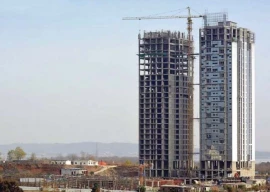
As many as 88 dehs in the Kaccho, mountainous region in Dadu district, were also among those 315 dehs which were officially classified as drought-stricken through the September 5 notification.
The people of Kaccho, however, claim that the starvation and water scarcity as well as delay in food relief, which the government has pledged to provide, has left migration as the only option for survival.
Palijo calls for attention toward drought in Sindh
“Thousands of residents of Kaccho are migrating to barrage areas along with their families and livestock animals,” said Muhammad Ali Bozdar, who was among the people who protested in Dadu district on Friday, decrying alleged indifference of the provincial government.
“Many villages have literally become uninhabited,” he claimed. Ghulam Dastgir Shahani, another protester, said the people were expecting food aid but delay on part of the provincial government has made many of them hopeless.
MPAs censure Thar hospital administration
“A severe shortage of fodder for the livestock has also forced thousands of people to migrate to the barrage areas,” he said. “We can’t afford to eat even one time’s meal,” said Majeed Roodnani, adding that many livestock breeders feel compelled to sell their animals at dirt cheap rates.
Like the desert regions in Tharparkar, Umerkot and Sanghar, the people, agriculture and livestock are dependent on rain as a sole source of water. Shabbir Shahani and other protesters claimed that even the doctors and paramedical staff have left the health centres in the rural areas because of the drought situation.
The protesters also blamed elected legislators and local government representatives for leaving them in the lurch.
Published in The Express Tribune, September 15th, 2018.










1614423942-7/-ET-Burns-Road-by-Athar-Khan-(8)1614423942-7-270x192.webp)






COMMENTS
Comments are moderated and generally will be posted if they are on-topic and not abusive.
For more information, please see our Comments FAQ